Pepsi’s long history of logos: A lesson in modern logo design from the past
Some brands tend to become timeless classics.
They manage to hit the right chords between nostalgia and iconic connections to the present.
One such brand is Pepsi; the brilliant culmination of logo design and brand identity makes it relevant to every generation since its conception as a mass-produced cold drink.
But what makes Pepsi such a charm, you may ask?
Pepsi is amongst a few brands that are recognized globally due to their visual presence before the era of digitization. It is a story of endless imagination within the structural bounds of brand identity known to their global consumers.
The history of Pepsi is as long as a century and a quarter. It has undergone twelve phases of redesign, signifying the changes in the brand’s organization and position in the market.
Keep in mind; we are not mentioning the variants like Pepsi Max or Diet Pepsi here; brand differentiation is a story for another day!
Irrespective of the changes this classic logo goes, it still remains the distinct flavor of youth and summer, festivals, and concerts.
In retrospect, the Pepsi logo has not gone through any significant changes that might have changed it in its entirety. However, the truth of the fact is that this recognizable logo has maintained such a stronghold on the consumers that the perception and connotations have not swayed at all.
The changing times and trends have not led to the dusk of Pepsi’s market share, but it has only experienced an upward incline. The company’s logo has always been in line with its culture, goals, and attitude.
This is why Pepsi has stood through the test of time with its flavor, name, and logo. After all, the Pepsi evolution has had a profound impact on not just the company but also the way advertisement, and brand endorsement has changed.
Let’s go over the history of this brand and its logo to discern a few lessons in logo design.
A blast from Pepsi’s past
Originally, Pepsi was named Brad’s Drink after the owner. It was renamed Pepsi-Cola in August of 1898. The jingle ‘Nickel, Nickel’ became such a popular tune that Life Magazine declared it as immortal. It was translated in fifty-five languages.
Pepsi changed the course of advertising history in the mid-1980s by bringing Pop Music into the advertising mix for the brand. The advertisement features Michael Jackson and becomes a moment to be cherished by millions of Pepsi fans around the globe.
This is a third of what Pepsi has achieved in its long history. The brand has, without a doubt, been an undeniable part of our lives.
While researching for this article, we chose a different route. We asked our parents, grandparents, and even great-grandparents (one of us) to name a popular food or beverage from their youth. Lo and Behold, each generation had one brand name in common; Pepsi.
Let’s dive right into the history of the brand and its beloved logo!

Chapter one: Brad’s Drink
Pepsi was called Brad’s Drink after Caleb Bradham when he invented the soda in 1893.
The name was swapped in 1898 for Pepsi that was trademarked nearly five years later. When Brad’s drink became Pepsi-cola, the eye-catching red color had taken over the old blue logo.
Pepsi was branded as a health aid in its early era. It was sold with the tagline; ‘Exhilarating, invigorating, aids digestion,’

While Pepsi was on the road to fame, so was its arch-nemesis, Coca Cola. Pepsi tried to mimic the swirls and scarlets of Coca Cola which resulted in a logo that was too strikingly similar to the script used by the latter.
Despite the fact that this was not a direct attempt towards hitting Coca Cola in the head, it was established that the red soda was doing a little better and had set the precedent of using the script for all leading logos of the time.
From its origin until 1940, Pepsi had a logo made of white script on a red background. The color scheme gradually involved shading, hues of blue, and the removal of the script to become what we know it today!
By 1940, Pepsi had become popular across the continent, and its logo had grown into a condensed lettering pairing with soft tail curls and bold alphabets. The classic lettering from the past had continued on until 1940 and was characterized by the smaller letters shrinking into the serifs as the words were printed longer and broader on the bottle.
Chapter two: Bringing back the blue.
After 1940, Pepsi underwent an eye-opening period where they chose to make prominent changes to its logo. The logo went from being a text to a circular rendition that has continued to exist even today. The inclusion of blue was like a re-introduction of the original concept.
The brand took the road of original ideas and started using a cleaner ideology for itself. The circular design was also chosen to incorporate Caleb Bradham’s group, the Original Pure Food Drink, to the mix.
It had less to do with the history of the company and more to do with the political effects of the Second World War. The brand wanted to show its appreciation for the troops fighting for the country, and this color combination with a circle was the perfect way to get it done.

In 1943 the bottle caps had inscriptions ‘Bigger drink, better taste.’ The top was red, and the bottom was blue with white detailing. From then on, the cap remained the same for more than the next two decades.
And in the 1960’s came a Pepsi logo that remains the same until today, with slight changes, of course, to signify the change in culture and times!
Chapter three: Introduction of minimalism in design philosophy
The 1970s was a decade of radical changes across the globe. Societies were undergoing changes in the political structure, the system was being abolished, and revolutionaries were on their ride to fame.
Since Pepsi has been very intuitive towards embracing change, the company realized that it was time to embrace modernity and technology. The wave of radical change led to the introduction of a minimalist design philosophy that made Pepsi clear and neat.
The precision of the minimized design had left the white color background in the past. Instead, the color was used to outline the sphere and rectangular boundaries of the logo.

Red and blue became the dominating color scheme of the company logo design, where the word Pepsi remained at the focal point with a few alterations made in the typeface.
The brand had bid adios to the swirly scrips and the curlicues that had always been a part of Pepsi’s identity. The brand had dropped the name Cola in 1962 and had emerged as a neat and well-cut design of geometric precision.
Outside the spherical boundaries of the new logo laid two trapezoids with a reduced mainstay of white to show the evolution of the brand logo.
The dramatic change was hinting towards popularity that was waiting on the horizon with the brand’s innovative approach towards design and marketing.
Chapter four: Celebrating a century of the world’s favorite cola.
The Pepsi logo underwent a significant change for the celebration of its hundred years in 1991. The company realized that incorporating the name into the circle did not seem like a viable option for the time.
This is why they chose to split the logo into two sections according to the branding graphics. They did not remove either of the sections but instead added the background of the trapezoid shape. The Pepsi name went back to the top of the label, and the red and blue circle was placed to the right side.

This was an iconic move that was following the previous design philosophy of minimalistic embrace of modernity and changing times. The simpler circle and emphasized text remained the torchbearers of the Pepsi logo.
Since the word ‘Pepsi’ was no longer in the designated space of the circular element, the designers needed a striking piece of contrast to balance the red and blue hues in the forefront.
This led to the addition of a wavy white line in the center that spoke of the traditional Pepsi logo and its long history of striking balances through contrast in the tertiary colors from the border. This change opened the doors to a slew of opportunities for the Pepsi logo in the future.
Chapter five: reversing colors.
The circle in the logo underwent some changes along the way. In 1998, the company reversed the white and blue. Suddenly, Pepsi was no longer written in blue but in white, and the background had flipped to blue.

In 1998 the company flipped the colors of the logo. It was reflected in the blue text on a white background going reversal.
The red was no longer in the background, and the globe was perched below the wordmark. Unlike the other variations of the logo, the 1998 variation of the logo had introduced depth through shading. The gradient background made the globe seem luminous.
This marked the change in the new brand story with a new campaign and slogan; The Joy of Cola. The new jingle, paired with its series of commercials, indicated signage for the new millennium.
The brand took two years to change the jingle from ‘The Joy of Cola’ to the ‘Joy of Pepsi’ and, in true Pepsi style, featured the iconic Britney Spears to name the change.
Chapter six: the modern globe of Pepsi.
Today the Pepsi Globe Logo has the impression of a smile that retains the uniqueness of its traditional colors, font style, and shapes. The spherical shape of the swirl in the center continues to separate the upper disk of the log from the lower one.
The white space continues to undergo tweaks that add appeal to the logo. It had a patriotic flare of minimalist design from the 1970s with the script-like curves from the original.

The present logo was designed in 2008 when the company started revamping its brand as its rebranding strategy. The logo signified the changes that are relevant to the consumers.
It is a prime example of remaining relevant in the market for more than a century. The marketing strategy has focused on the amendments in logo design that keeps the audience engaged in the company.
The successful presentation of the corporate identity and regular changes made the logo a classic.
The meaning of the Pepsi logo
The Pepsi logo has always been simple, even with the elaborate swirls and curlicue of its font. It has never held heavy details with details only being implemented to the subtlest elements, such as the bull’s eye, implying it to be the best soda in the market.
It alludes to the most complex ideology in the brand’s identity. The product was invented in a pharmacy where the Bradham created the modern era’s first energy drink. He was indeed a sorcerer in his own name with the magic it holds.

The eccentrics of the design shows a symbolism that shows pledges allegiance to the American flag while representing some of the deepest philosophies of life within the circle broken in two.
In the end, the iterations of the logo have been adjusted according to the market trends that have changed the culture and made a mark on the generations to come.
While keeping the core visuals in mind, the design principals of the brand have stuck along in the long run.
Final Thoughts
The most interesting fact about the Pepsi Logo is how it has continued to adhere to its original state yet remaining a vibrant part of the social sphere around the globe.
The logo remains immediately recognizable to the audiences and has led to the differentiation into a few variations of the classic Pepsi into diet cola and energy drinks.
Pepsi and its logo is a lesson in consistency, adaptation, and the legend of an icon. It remains to be the favorite soda of families through generations.
Now that our empty cans of Pepsi are resting in the trash with the wrappers of Lays, it’s time to wrap up the ode to the Pepsi logo in their own words:
Pepsi-Cola hits the spot, Twelve full ounces, that’s a lot.
Twice as much for a nickel, too. Pepsi-Cola is the drink for you
Get a Free Quote
+1 845 3770255
Call on anytime
To discuss your project










